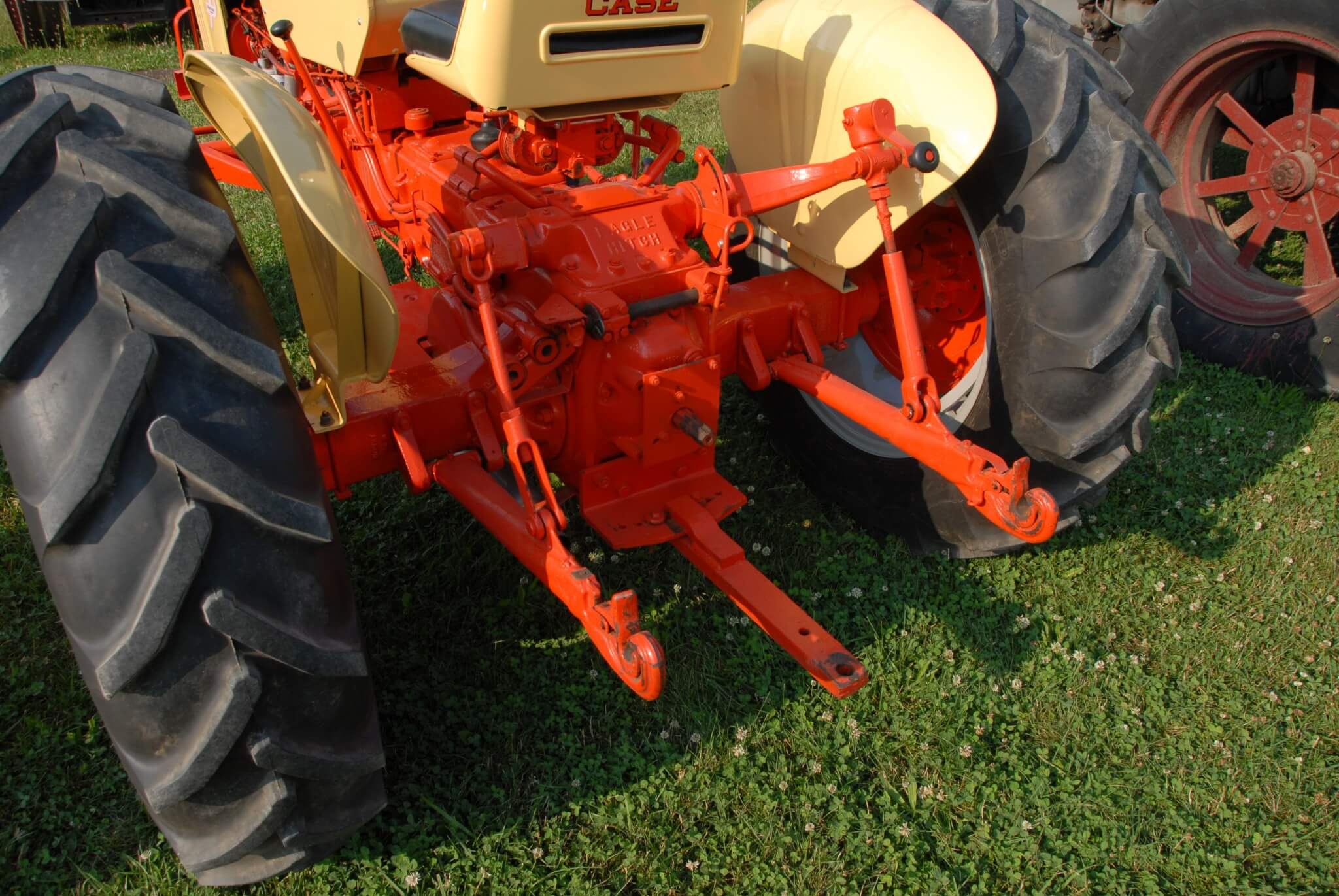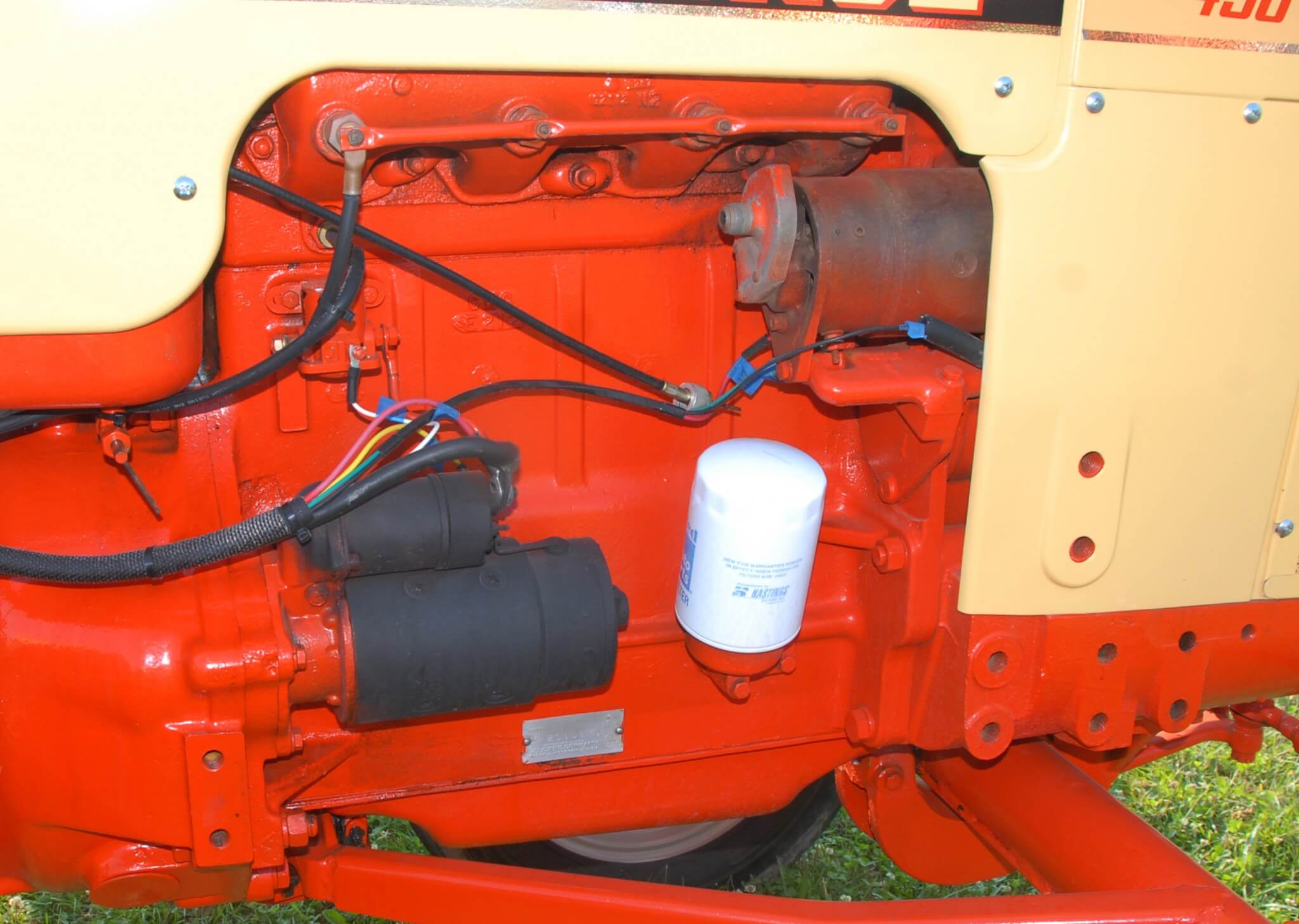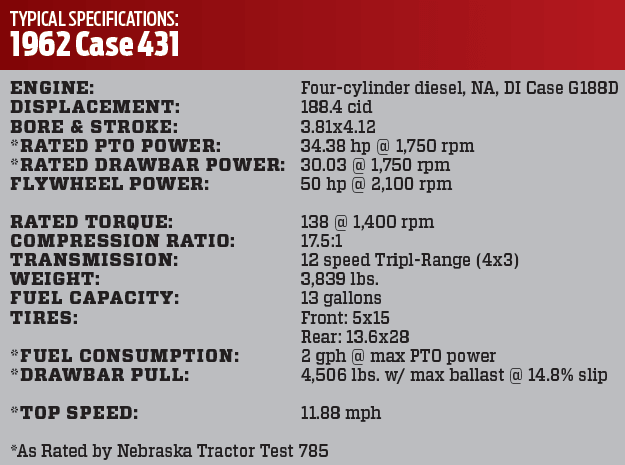Tractor Talk: Case 431, Carrying On the Tradition
The 1960s were a rough time for J.I. Case, but that didn’t stop the company from introducing what would become one of its best-loved tractor lines, the 30-series. Following on the heels of the successful hundred-series of the 1950s, Case introduced the 430, 530, 630, 730 and 830 in 1960, with the larger 930 General Purpose and 1030 tractors following later in the decade.
The 30-series started as a modest extension of the popular hundred-series. Case was in dire financial straits at the time, so upgrades were done on a shoestring. Case was able to crawl back to some semblance of financial security by the end of the decade; credit goes to an accomplished new company president and a solid sales showing for the 30-series, a solid tractor to begin with that received sensible upgrades throughout its model run.

The 430 was the smallest tractor in the line. All of them carried a “430” designation on the hood, but in truth there were several sub-models in the series. The Model 430 was a standard, non-adjustable-tread diesel utility with a cast iron front axle. The 431 was a diesel row-crop tractor with adjustable-tread rear wheels and an adjustable-width front axle. The 440 and 441 were the gasoline-powered versions of the 430 and 431.
One of the innovations Case debuted in the 1950s was the Tripl-Range transmission, which added a three-range gearbox to Case’s solid four-speed transmission for a total of 12 forward gears. The range box had Low, Direct and High ranges, the latter being essentially an overdrive. With the transmission in first gear, for example, Low resulted in a maximum speed of 1.6 mph while Direct yielded 2.7 mph and High 4.5 mph. These were very useful gearing splits and the Tripl-Range became a strong selling feature for Case tractors.


The Case hand clutch was another popular feature. In the early days, tractor-operated power take-off (PTO) machinery, including pull-behind (non-self-propelled) combines, were very common. The hand clutch allowed the operator to manually disengage the PTO system from the transmission, stopping forward travel but keeping the PTO at speed. This was an especially important feature for combines, which take time to clear themselves of material even after crop is no longer being fed into them. All 30-series tractors, even the small 430 models, had the hand clutch as standard equipment from the start of production in 1960, but it became an increasingly redundant feature that first became optional and then disappeared altogether.
In late 1962, smaller 30-series tractors like the 430 introduced the new Draft-O-Matic hitch, the first draft-sensing hitch offered by Case. Draft-O-Matic was not an industry first, but it was one of the better such systems offered. It allowed the operator to choose between draft and manual position control. The Draft-O-Matic system remained a feature of Case tractors well into the 1990s.

When the 430 and 530 tractors made their debut in 1960, they featured an all-new four-cylinder diesel engine, the G188D, which displaced 188 cubic inches (3.1 liters) and made as much as 50 hp and 135 lb.-ft. of torque. The G188D would prove to be one of J.I. Case’s most versatile diesels, remaining in production well into the 1990s and seeing use in tractors, backhoes, crawlers, forklifts, construction equipment and as a portable power source. The engine would later be bored and stroked to create the 207-cid (3.4-liter) G207D, and similar gasoline engines were also built.
The 430 remained on sale through 1969 and more than 19,000 were produced before the line was upgraded into the 470. Though the popular 70-series featured many upgrades, the 470 was really little different than the 430. But the 470 faded away after 1972, when Case’s corporate parent, Tenneco, bought the tractor division of David Brown Ltd. Of England, and began rebadging British-built David Brown tractors with the Case brand. Most of Case’s American operations would focus on larger tractors and construction equipment. DW
SOURCE:
National Threshers Association













